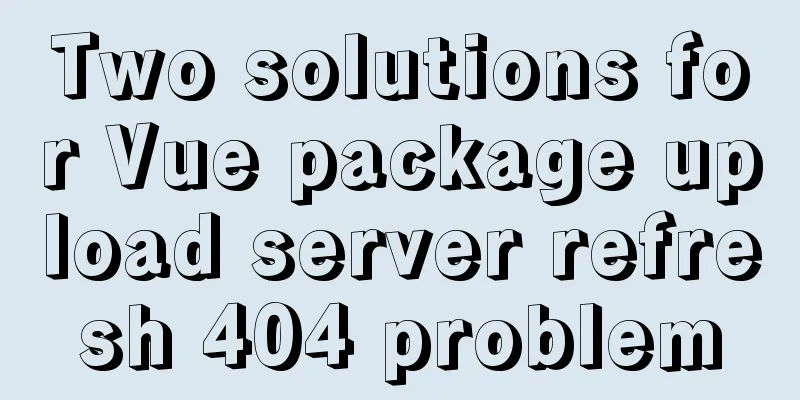You may need a large-screen digital scrolling effect like this

|
The large-screen digital scrolling effect comes from a large-screen UI diagram in recent work. There is a module on the UI diagram that needs to have the effect of numbers flipping up. The following is the final effect achieved:
Ideas Before achieving this effect, let's sort out our ideas and use a mind map to design our implementation steps, as follows:
Initial Implementation You can inspect elements and download digital background images
With the above design process, let's first implement it simply
<div class="box">
<p class="box-item">
<span>1</span>
</p>
</div> Key
.box-item {
position: relative;
display: inline-block;
width: 54px;
height: 82px;
/* Background image */
background: url(./number-bg.png) no-repeat center center;
background-size: 100% 100%;
font-size: 62px;
line-height: 82px;
text-align: center;
}After implementing the above code, its effect will be as follows:
Thinking: After there are numbers in the background box, let's think about it now. The text in the background box must be numbers between
Its real-time effect is as follows:
Based on the above inspiration, we can achieve the following effect:
<p class="box-item"> <span>0123456789</span> </p>
.box-item {
display: inline-block;
width: 54px;
height: 82px;
background: url(./number-bg.png) no-repeat center center;
background-size: 100% 100%;
font-size: 62px;
line-height: 82px;
text-align: center;
/* Newly added code*/
position: relative;
writing-mode: vertical-lr;
text-orientation: upright;
/* overflow: hidden; */
}
/* Newly added code*/
.box-item span {
position: absolute;
top: 10px;
left: 50%;
transform: translateX(-50%);
letter-spacing: 10px;
}Calculate scroll If we want the number to roll to The answer is: scroll down What about the other numbers? Thanks to our special implementation, there is a general formula for the rolling distance of each digit:
transform: `translate(-50%,-${number * 10}%)` With the above formula, we let the number roll to
.box-item span {
position: absolute;
top: 10px;
left: 50%;
transform: translate(-50%,-50%);
letter-spacing: 10px;
}Implementation of scrolling animation After knowing the specific rolling distance of each number, let's design it so that the numbers can roll randomly:
The following is the specific random scrolling Code:
setInterval(() => {
let number = document.getElementById('Number')
let random = getRandomNumber(0,10)
number.style.transform = `translate(-50%, -${random * 10}%)`
}, 2000)
function getRandomNumber (min, max) {
return Math.floor(Math.random() * (max - min + 1) + min)
}So far, our digital scrolling effect has been initially realized. In the next section, we will gradually improve this effect to meet business needs. Complete In the previous section, we initially completed the scrolling effect. In this section, we will design a general Accepting Parameters This component only accepts a number parameter, which we put in
props: {
number: {
type: Number,
default: 0
}
}Filling Because of our business needs, our maximum number of digits is const MAX_LEN = 8 If the number of digits passed is less than Since this part of the code is more common, in order to save space, the code will not be displayed. You can write the relevant js code yourself. Rendering We separate the above padding string into character arrays and render them on the page: computeNumber: is a character array, for example: ['0','0',',','0','0','0',','9','1','7']
<ul>
<li
:class="{'number-item': !isNaN(item) }"
v-for="(item,index) in computeNumber"
:key="index"
>
<span v-if="!isNaN(item)">
<i ref="numberItem">0123456789</i>
</span>
<span v-else>{{item}}</span>
</li>
</ul>
.number-item {
width: 50px;
background: url(./number-bg.png) no-repeat center center;
background-size:100% 100%;
& > span {
position: relative;
display: inline-block;
margin-right: 10px;
width: 100%;
height: 100%;
writing-mode: vertical-rl;
text-orientation: upright;
overflow: hidden;
& > i {
position: absolute;
top: 0;
left: 50%;
transform: translate(-50%,0);
transition: transform 0.5s ease-in-out;
letter-spacing: 10px;
}
}
}Page rendering effect:
Random growth of numbers, simulating polling effect After the page is rendered, let's make the numbers scroll. We design the following two methods, where
//Timed increase number increaseNumber () {
let self = this
this.timer = setInterval(() => {
self.newNumber = self.newNumber + getRandomNumber(1, 100)
self.setNumberTransform()
}, 3000)
},
// Set the offset of each digit setNumberTransform () {
let numberItems = this.$refs.numberItem
let numberArr = this.computeNumber.filter(item => !isNaN(item))
for (let index = 0; index < numberItems.length; index++) {
let elem = numberItems[index]
elem.style.transform = `translate(-50%, -${numberArr[index] * 10}%)`
}
}The final effect:
The above is the full content of this article. I hope it will be helpful for everyone’s study. I also hope that everyone will support 123WORDPRESS.COM. |
<<: Thoughts on truncation of multi-line text with a "show more" button
>>: MySQL infobright installation steps
Recommend
mysql indexof function usage instructions
As shown below: LOCATE(substr,str) Returns the fi...
Detailed explanation of vite2.0+vue3 mobile project
1. Technical points involved vite version vue3 ts...
HTML table tag tutorial (35): cross-column attribute COLSPAN
In a complex table structure, some cells span mul...
Analysis of the principle of Nginx+Tomcat to achieve load balancing and dynamic and static separation
1. Implementation principle of Nginx load balanci...
Don't forget to close the HTML tag
Building web pages that comply with Web standards ...
Modification of time zone problem of MySQL container in Docker
Preface When Ahhang was developing the Springboot...
How to recover accidentally deleted messages files in Linux
If there are files that are being used by a proce...
Detailed examples of converting rows to columns and columns to rows in MySQL
mysql row to column, column to row The sentence i...
An example of using CSS methodologies to achieve modularity
1. What are CSS methodologies? CSS methodologies ...
MySQL 5.7 cluster configuration steps
Table of contents 1. Modify the my.cnf file of se...
Detailed steps to use Arthas in a Docker container
What can Arthas do for you? Arthas is Alibaba'...
Why can't the MP4 format video embedded in HTML be played?
The following code is in my test.html. The video c...
Summary of block-level elements, inline elements, and variable elements
Block element p - paragraph pre - format text tabl...
Create a virtual machine and install the Redhat Linux operating system on VMware (graphic tutorial)
How to create a virtual machine on VMware and ins...
vue+node+socket io realizes multi-person interaction and releases the entire process
1. Background 1. The front end uses vue + vuex + ...


















